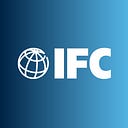By Sumit Manchanda
Bangladesh is booming. Overseas sales of textiles and apparel have risen an average of seven percent a year for most of the past decade and only China is a bigger exporter of the types of mass-produced, readymade garments that Bangladesh has built its economy on. But Bangladesh now is at an inflection point.
For 30 years Bangladesh has not significantly diversified its products or innovated its processes. It has relied on manufacturers of inexpensive tee shirts and clothing to drive its economic growth and create jobs. It started in the early 1980s by attracting international brands to its factories with low wages and duty-free and quota-free access to important markets like Europe. And it has stuck to that strategy ever since. Today, an extraordinary 80 percent of Bangladesh’s exports come from low-skill textile factories, the same kinds of factories that its competitors are opening up in dozens of developing countries. Already Vietnam, Ethiopia and some others are biting at Bangladesh’s heels.
Soon, economists say, Bangladesh may lose its readymade garment edge. It is already counting down to 2024 when it is expected to graduate from “least developed” into “developing world” status — a decision that’s made by a special United Nations committee — and lose its duty-free and quota-free advantage. Bangladesh needs a Plan B.
Countries often advance their economies through manufacturing by building on core competencies to develop advanced production processes that can produce higher-value and more complex products. Ricardo Hausmann, the Harvard professor who studies economic complexity, says the trick is to add “capabilities to your capabilities.” For Bangladesh, this means leveraging the expertise it derived from decades of textile manufacturing. IFC has been helping Bangladesh by designing interventions related to both drivers of production and the structure of production — primarily on product complexity.
An important opportunity arose in the wake of the tragedies at Rana Plaza and Tazreen Fashion factories in 2012–13 that killed more than 1,200 workers. Several key customers such as Levi Strauss and H&M vowed to only do business with suppliers that met international social, environmental, health, safety and labor standards. Soon after, with the assistance of IFC, manufacturers invested in resource efficiencies, new technologies and improved social and safety standards. The efforts increased the sophistication of Bangladesh’s factories, benefited its workers and aligned manufacturers with their customers’ social responsibility commitments. This helped to expand relationships with global brands that place a value on corporate accountability and transparency.
The Harvard Business Review echoed the impact of this in a recent article. “Consumers may be willing to pay 2% to 10% more for products from companies that provide greater supply chain transparency,” it said, quoting a study by MIT’s Sloan School of Management.
Still, Bangladeshi suppliers — largely content with their tried and true manufacturing practices — were hesitant at first to change. Transitioning their production processes to more environmentally friendly standards, for example, was particularly vexing. Water, for instance, was so inexpensive that factories that wash, dye and finish fabrics consumed far more than international best practices.
Insufficient access to financing hampered desperately needed investments and held back efforts to move to cleaner production. To address these challenges, IFC launched the Partnership for Cleaner Textiles in 2013. Since the launch, we have leveraged strategic partnerships with global apparel brands, financial institutions, technology vendors, industry associations, and the government and civil society to guide brands on the environmental impacts of their sourcing decisions and help them develop cleaner options. In economic terms, Bangladesh’s value chain reflect these changes, making it possible to attract more environmentally discerning brands.
IFC has also been instrumental in helping manufacturers to leverage their existing textile infrastructure to incorporate additional fabrics into its process. Currently, apparel exports from Bangladesh are mostly cotton-based items whereas the market has shifted towards manmade fibers.
Another focus has been on automation, with the potential of using Bangladesh’s manufacturing expertise to expand into new products. Automation of processes is not widespread in the readymade garment industry, which impacts process performance, quality and sustainability. Automation, and the know how that goes with it, could help Bangladesh branch into new products. Earlier this summer the Nikkei Asian Review reported that South Korea, whose technology and knowhow helped spark Bangladesh’s textile boom in 1979, was exploring the possibility of outsourcing semiconductor production to Bangladesh.
IFC’s approach is holistic. We have championed initiatives such as collaborating with policymakers to untangle bottlenecks at ports, and with factory owners to adopt socially and environmentally responsible practices that distinguish Bangladeshi manufacturers from global rivals. All are aimed at improving production complexity and nudging Bangladesh up the value chain.
For decades, readymade garment manufacturing has been a reliable path out of poverty for many countries. It’s a long and difficult process, and Bangladesh is at an early stage. But the path is illuminated by the spectacular rise of what were once some of the world’s poorest countries that reinvented themselves into developed, high income global economies. With the right focus and assistance, Bangladesh can do the same.
Sumit Manchanda is a Senior Private Sector Specialist at IFC.
